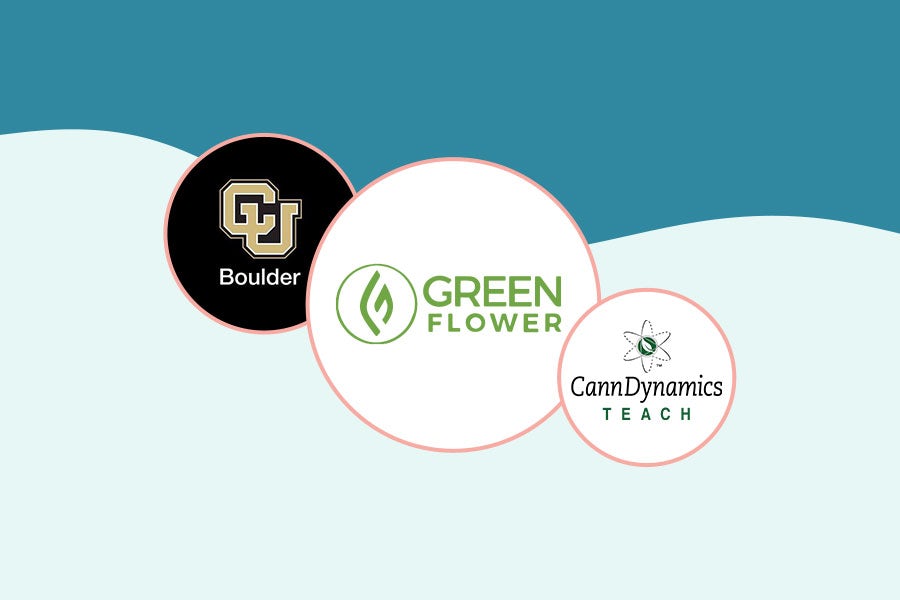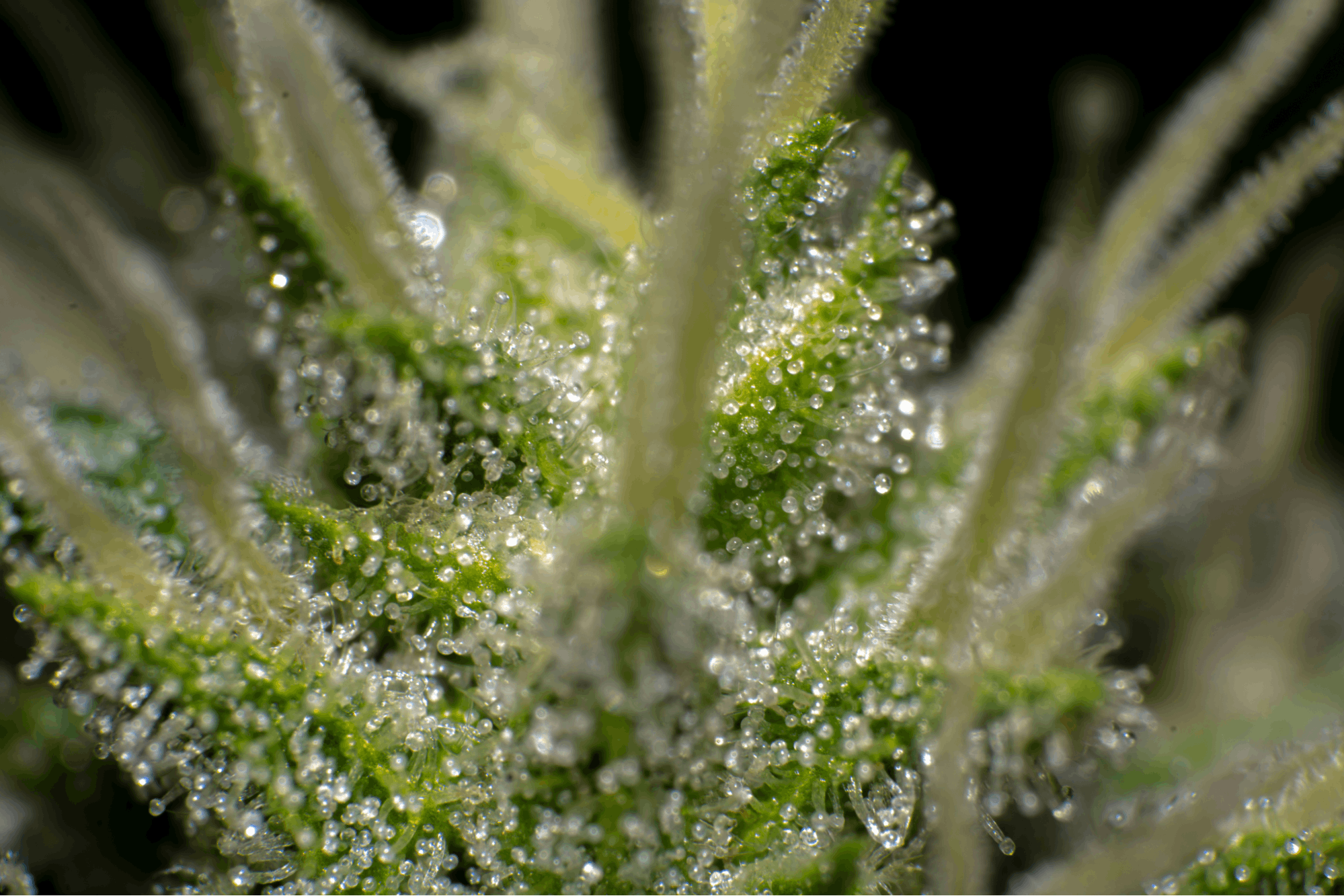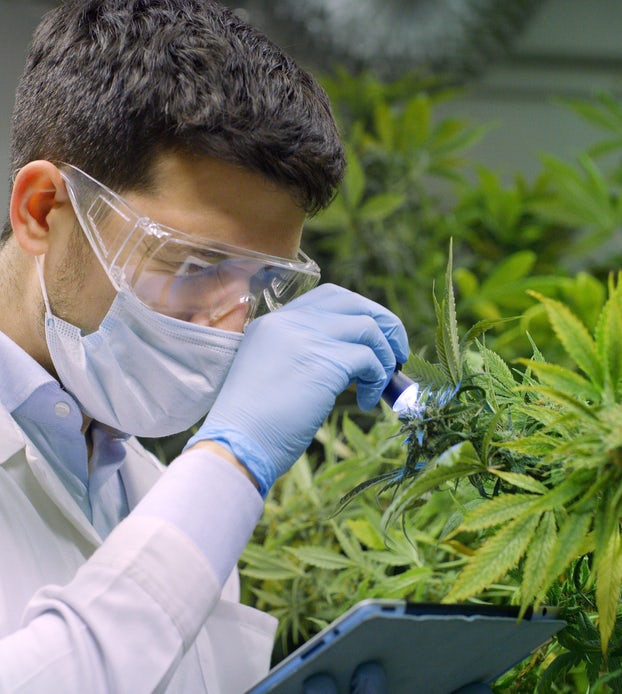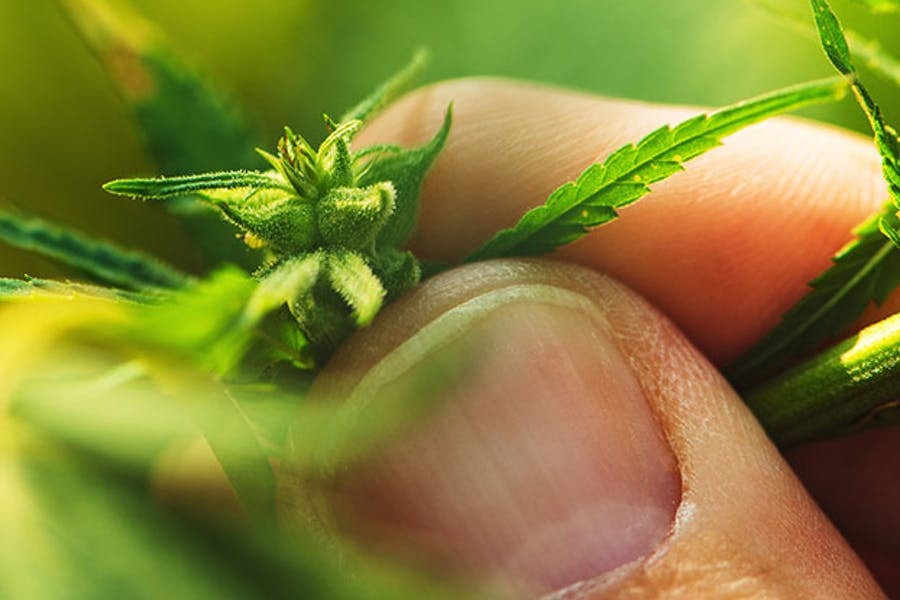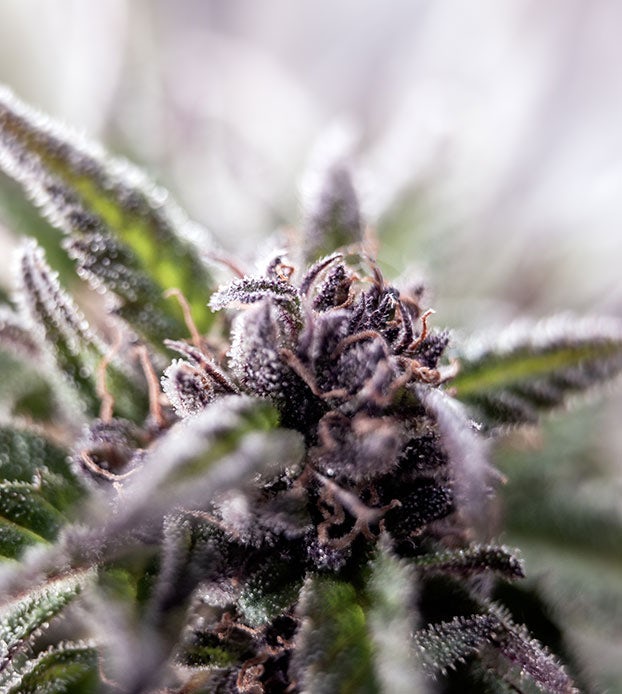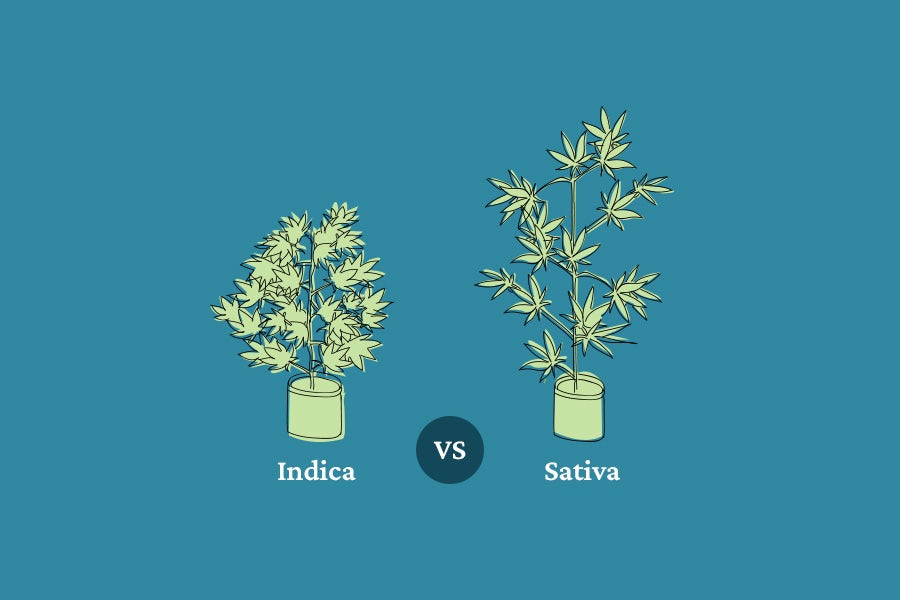So much attention is placed upon THC and CBD that sometimes the less abundant cannabinoids are forgotten about or not appreciated fully. Yet cannabinol (CBN), the first cannabinoid ever discovered by modern scientists, is slowly making a comeback in the cannabis industry.
Long before THC was discovered in the 1940s, CBN was first identified at the turn of the 20th century from a plant that was then known as Indian hemp. 1
The Indian hemp plant had been known to cause sleepiness and relieve pain for thousands of years, but it wasn’t until 1899 that the active molecules from Indian hemp were first identified by modern chemists. Of course, this plant is now known to be marijuana (or Type I cannabis), which is still commonly used for sleep and analgesia today.
The reason early scientists found CBN instead of THC is likely due to the age of the plant material and improper storage, as it’s now known that CBN is the natural degradation product of THC. 2
This means that over time THC is transformed or oxidized to CBN due to exposure to light, heat, or even air. Therefore, it makes sense that CBN is most commonly found in aged or improperly stored cannabis, and hardly ever present in fresh flower or low-temp extractions.
Converting THC to CBN happens through oxidation
The conversion of THC to CBN happens via a process that isn’t all that different from how THCA is converted to THC when it is exposed to heat, known as decarboxylation. But the conversion from THC to CBN is actually known as oxidation, and instead of losing a carboxyl group, you lose a pair of hydrogens during the oxidation reaction. Both are natural processes that occur within the plant itself, and can happen simultaneously.
Interestingly, smoking (combustion) is believed to produce the most CBN when consumed, which could be due to higher temperatures that are achieved during consumption. 3
CBN’s boiling point temperature is about 365°F, compared to THC’s estimated boiling point at about 314°F. 4
Today’s vaporizing devices allow the consumer to dial in a specific temperature that might not cause CBN to boil and produce vapor, whereas the high heat produced by a butane lighter or the cherry on a joint most certainly will.
What does cannabinol actually do?
In animal and human studies, CBN has demonstrated the following properties: 5
- anticonvulsant
- anti-inflammatory
- antibiotic properties
These effects are shared by THC and CBD, but are typically less potent. Similarly, CBN produces less psychoactivity by itself when compared to THC, and is less sedating. 6 7
One explanation for this is that CBN binds less strongly to the CB1 and CB2 receptors compared to THC overall, but has a preference for the CB2 receptors, instead of CB1 receptors like THC. 8
Available preliminary research indicates that CBN is beneficial for relieving pain, enhancing immune function, and increasing appetite.
In a 2019 animal study, CBN isolate was reported to relieve musculoskeletal pain. However the combination of CBN and CBD produced longer-lasting results, supporting the entourage effect theory. 9
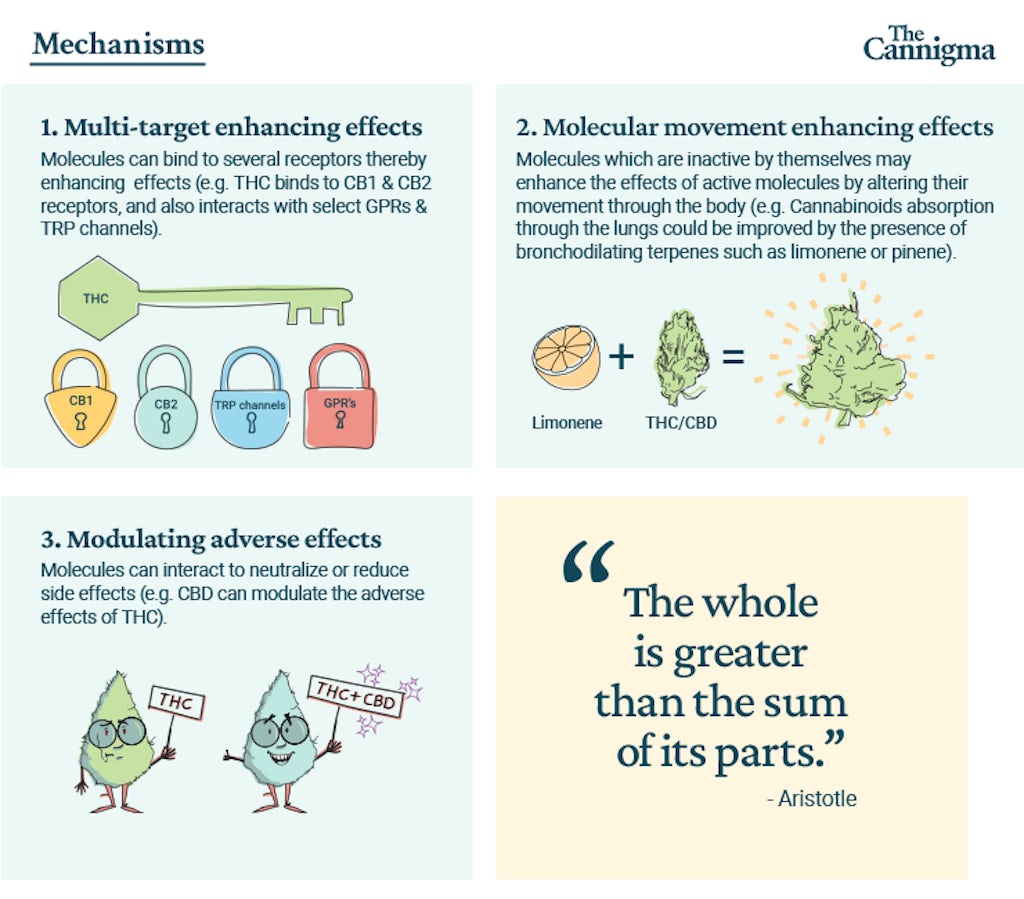
Because CBN has a particular affinity for CB2 receptors, which are located throughout the immune system, it is of little surprise that many studies indicate that this receptor plays a key role in modulating immune function. 10
In fact, activation of the CB2 receptor has been shown to reduce inflammation, which is heavily involved in the body’s response to autoimmune diseases. 11
CBN’s ability to target CB2 receptors, in comparison to THC (which prefers the CB1 receptor), gives it better credibility in treating autoimmune conditions such as rheumatoid arthritis, multiple sclerosis, and inflammatory bowel disease. 12
A 2012 study in rats compared the effects of CBD, CBG, and CBN on food consumption and showed that unlike the others, CBN increased feeding. CBD actually decreased feeding, while CBG had no effect. This indicates that CBN could be considered as a less psychoactive option for increasing appetite, especially in those who don’t tolerate THC very well. 13
CBN has been receiving a lot of attention for its ability to induce sleep, as it’s frequently marketed as nature’s sleep aid. Early animal studies produced conflicting results; where one study’s results indicated CBN alone enhances barbiturate-induced sleep, another’s indicated it did not. 14 15
When CBN was studied without barbiturates (prescription sedative medications typically used for epilepsy), the combination of CBN and THC produced greater sedation together than either cannabinoid alone. 16 17
A recent 2021 review of the literature found that there is simply no substantial evidence to back CBN’s claim to sedation and that more human research is needed. 18
What can the current clinical trials tell us?
A common theme with cannabis is that more research is needed, so thankfully there are clinical trials in the works looking at the therapeutic utility of CBN.
One trial has already made it to Phase II and is actively recruiting, meaning that it passed safety and tolerability studies in healthy patients, and trials in specific individuals are already underway. It is exploring the treatment of pain from osteoarthritis with cannabinoid ratios – specifically, CBD + CBN and CBD + THC versus placebo. Those enrolled in the study will receive 28 days of treatment and then be assessed by pain-rating scales. 19
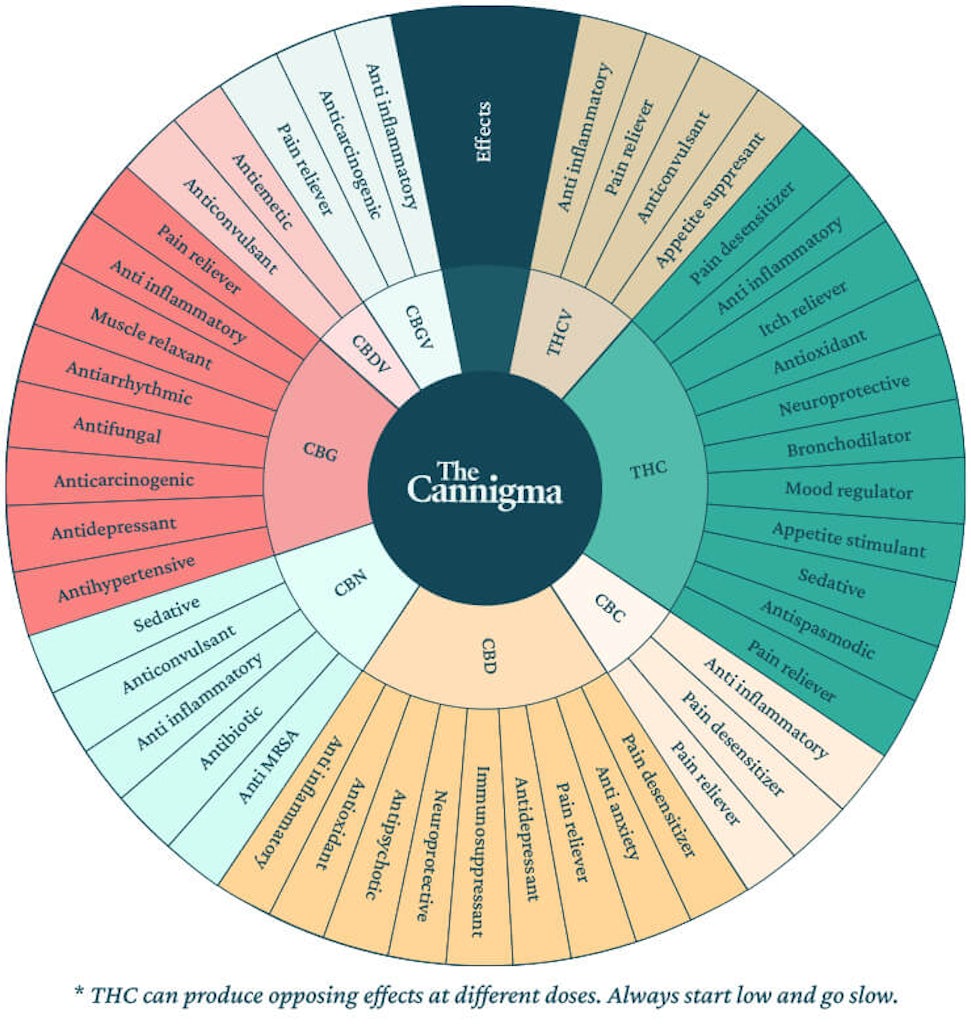
Another Phase II Trial that’s not yet recruiting is investigating the topical application of cannabinol in the treatment of epidermolysis bullosa (EB), which is a disease that causes the skin to severely blister. 20
Those recruited will apply either CBN cream or placebo to non-wounded areas over a course of 28 days. Preclinical studies by InMed Pharmaceuticals showed that CBN not only reduced markers of inflammation and pain, but also increased keratin. Altogether, the effects could improve skin integrity, prevent blisters from forming, and enhance the wound-healing process. 21
Where can I buy CBN? Is it even legal?
Products containing CBN can be found at most medical and adult use dispensaries, and they’re often even available outside of dispensaries thanks to the 2018 Farm Bill. As long as the product contains <0.3% THC and is extracted from hemp, it’s generally considered legal.
Since CBN is not commonly occuring in cannabis flowers, it is most commonly available as CBN oils or tinctures, gummies, and capsules.
Regardless of where or what you purchase, it is important to check the laboratory results for potency and safety parameters. Oftentimes, OTC products don’t come with these or lack certain information such as residual solvent and microbial testing. The best CBN products will come with appropriate and passing testing results and a brand with a trustworthy reputation.
Currently, the majority of CBN-containing products are marketed for sleep, using words and phrases like “sleep-synergy,” “calming,” and “doze.” Looking at the very limited research related to CBN and sleep, it would be best to pick a product that contains both CBN and THC if you’re looking to leverage this cannabinoid to get a good night’s rest.
How can you take CBN?
You probably already are consuming CBN but had no idea – especially if you prefer to smoke cannabis. Remember that flower-based product’s THC naturally degrades to CBN over time, despite even the best storage conditions.
When THC is exposed to the very high heats from the light of a light or the ember on the end of a joint, a small amount of it will degrade into CBN. How much this conversation takes place is not yet well studied and would vary based on many conditions.
When you get around to trying CBN for the first time, start with a small dose and increase slowly to avoid the side effects of over-consumption. But be prepared for a different type of high – one that is not as psychoactive but still provides symptom relief.
Sources
- Wood, Thomas Barlow, et al. “III.—Cannabinol. Part I.” J. Chem. Soc., Trans., vol. 75, 1899, pp. 20–36., https://doi.org/10.1039/ct8997500020.
- Russo, Ethan, and Jahan Marcu. Cannabis Pharmacology: The Usual Suspects and a Few Promising Leads. Academic Press, 2017.
- Gieringer, Dale, et al. “Cannabis Vaporizer Combines Efficient Delivery of THC with Effective Suppression of Pyrolytic Compounds.” Journal of Cannabis Therapeutics, vol. 4, no. 1, 2004, pp. 7–27., https://doi.org/10.1300/j175v04n01_02.
- McPartland, John M., and Ethan B. Russo. “Cannabis and Cannabis Extracts.” Journal of Cannabis Therapeutics, vol. 1, no. 3-4, 20 Oct. 2008, pp. 103–132., https://doi.org/10.1300/j175v01n03_08.
- Russo, Ethan, and Jahan Marcu. Cannabis Pharmacology: The Usual Suspects and a Few Promising Leads. Academic Press, 2017.
- Perez-Reyes, M., et al. “A Comparison of the Pharmacological Activity in Man of Intravenously Administered 1368-11368-11368-1, Cannabinol, and Cannabidiol.” Experientia, vol. 29, no. 11, 15 Nov. 1973, pp. 1368–1369., https://doi.org/10.1007/bf01922823.
- Walsh, Kenneth B., et al. “Minor Cannabinoids: Biosynthesis, Molecular Pharmacology and Potential Therapeutic Uses.” Frontiers in Pharmacology, vol. 12, 2021, https://doi.org/10.3389/fphar.2021.777804.
- Smith, Gregory L. Medical Cannabis: Basic Science & Clinical Applications: What Clinicians Need to Know and Why. OEM Press, 2016.
- Wong, Hayes, and Brian E. Cairns. “Cannabidiol, Cannabinol and Their Combinations Act as Peripheral Analgesics in a Rat Model of Myofascial Pain.” Archives of Oral Biology, vol. 104, Aug. 2019, pp. 33–39., https://doi.org/10.1016/j.archoralbio.2019.05.028.
- Cabral, Guy A., and LaToya Griffin-Thomas. “Emerging Role of the Cannabinoid Receptor CB2IN Immune Regulation: Therapeutic Prospects for Neuroinflammation.” Expert Reviews in Molecular Medicine, vol. 11, 2009, https://doi.org/10.1017/s1462399409000957.
- Turcotte, Caroline, et al. “The CB2 Receptor and Its Role as a Regulator of Inflammation.” Cellular and Molecular Life Sciences, vol. 73, no. 23, 11 July 2016, pp. 4449–4470., https://doi.org/10.1007/s00018-016-2300-4.
- Giorgi, Valeria, et al. “Cannabis and Autoimmunity: Possible Mechanisms of Action.” ImmunoTargets and Therapy, Volume 10, 2021, pp. 261–271., https://doi.org/10.2147/itt.s267905.
- Farrimond, Jonathan A., et al. “Cannabinol and Cannabidiol Exert Opposing Effects on Rat Feeding Patterns.” Psychopharmacology, vol. 223, no. 1, 28 Apr. 2012, pp. 117–129., https://doi.org/10.1007/s00213-012-2697-x.
- Yoshida, Hisatoshi, et al. “Synthesis and Pharmacological Effects in Mice of Halogenated Cannabinol Derivatives.” Chemical and Pharmaceutical Bulletin, vol. 43, no. 2, 1995, pp. 335–337., https://doi.org/10.1248/cpb.43.335.
- Chesher, G.B., et al. “Interaction of Cannabis and General Anaesthetic Agents in Mice.” British Journal of Pharmacology, vol. 50, no. 4, Apr. 1974, pp. 593–599., https://doi.org/10.1111/j.1476-5381.1974.tb08594.x.
- Fernandes, Mario, et al. “Modification of Delta-9-THC-Actions by Cannabinol and Cannabidiol in the Rat.” Psychopharmacologia, vol. 38, no. 4, 6 June 1974, pp. 329–338., https://doi.org/10.1007/bf00429130.
- Takahashi, R. N., and I. G. Karniol. “Pharmacological Interaction between Cannabinol and ?9-Tetrahydrocannabinol.” Psychopharmacologia, vol. 41, no. 3, 17 Sept. 1975, pp. 277–284., https://doi.org/10.1007/bf00428937.
- Corroon, Jamie. “Cannabinol and Sleep: Separating Fact from Fiction.” Cannabis and Cannabinoid Research, 31 Oct. 2021, https://doi.org/10.1089/can.2021.0006.
- “Cannabinoid Tablets for the Treatment of Pain from Osteoarthritis of the Knee – Full Text View.” Full Text View – ClinicalTrials.gov, Pure Green Pharmaceuticals, 6 Aug. 2021, https://clinicaltrials.gov/ct2/show/study/NCT04992962?term=cannabinol&draw=2&rank=8#contacts.
- “INM-755 (Cannabinol) Cream for Treatment of Epidermolysis Bullosa – Full Text View.” Full Text View – ClinicalTrials.gov, InMed Pharmaceuticals, 1 June 2021, https://clinicaltrials.gov/ct2/show/NCT04908215?term=cannabinol&draw=2&rank=1.
- “Cannabinol (CBN) under Development for Epidermolysis Bullosa (EB).” InMed Pharmaceuticals, 6 Dec. 2021, https://www.inmedpharma.com/pharmaceutical/inm-755-for-epidermolysis-bullosa/.
Sign up for bi-weekly updates, packed full of cannabis education, recipes, and tips. Your inbox will love it.

 Shop
Shop Support
Support
